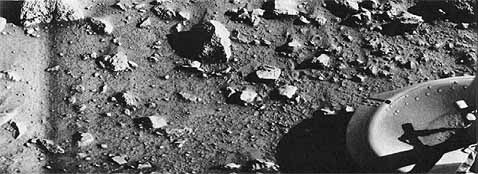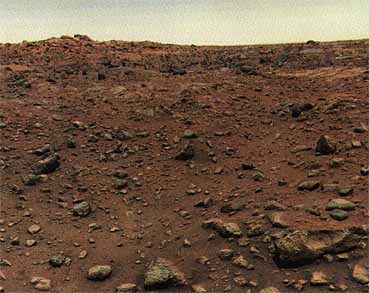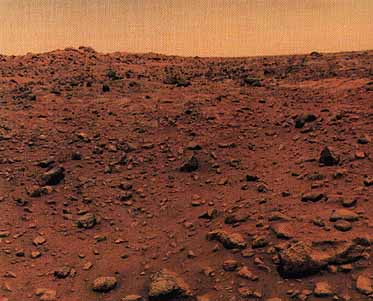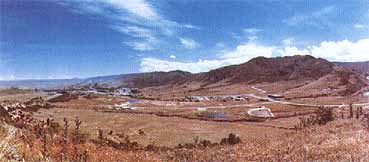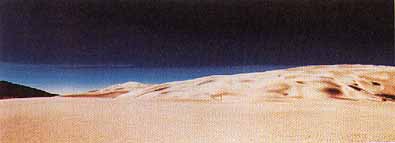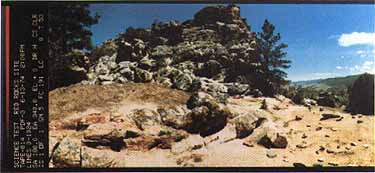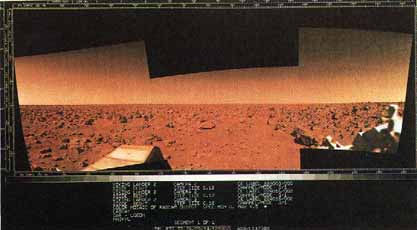|
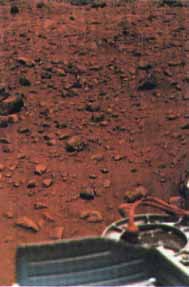
|
- Photos permit comparison of
the color of the Viking lander on Mars (at left) and
Earth (above)- especially the orange cables. Tim Mutch
used this guide to show that the red-sky rendition of
the Mars landscape was the correct one. In the Earth
photo, Jim Martin stands beside the science test
lander in the Von Karman Auditorium at Jet Propulsion
Laboratory.
|
















